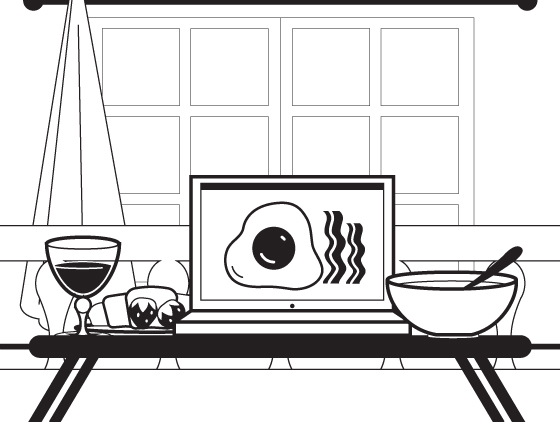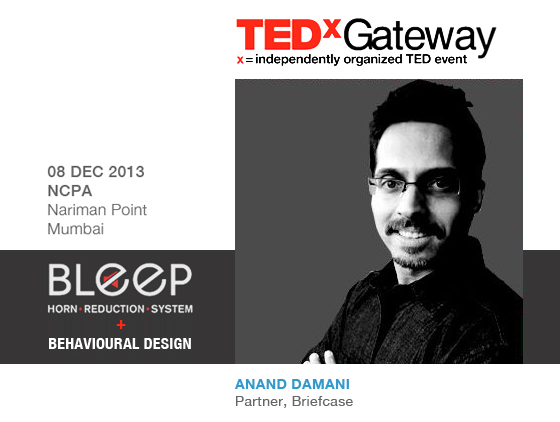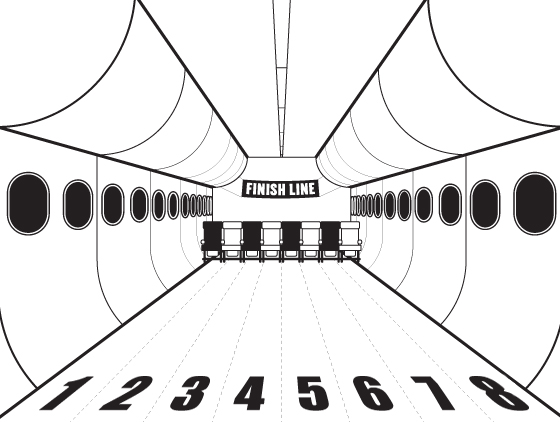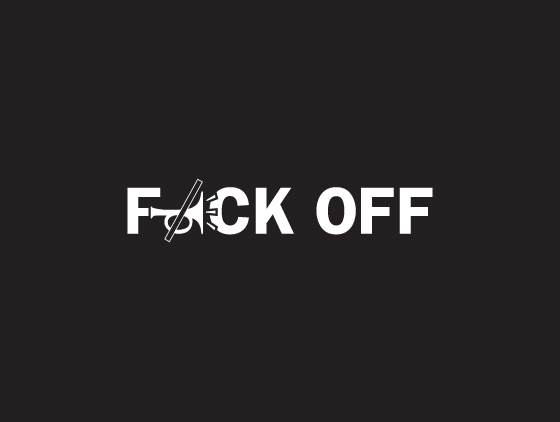Get more work done from home
Working from home means no pressure of deciding what to wear to work, no skipping breakfast due to hurrying up, no traffic jams, no wasting fuel, no pollution, no wasting time, no wasting money, no late-punching into office, no unnecessary meetings, no pointless brainstorms, no fake smiles, no sucking up, no monkey business. On the contrary working from home means having personal space, being at ease, improved focus and concentration, better ideation and greater creativity.
Christine Durst, founder and CEO of Staffcentrix and author of two books on the subject of telework, says the benefits start with basic cost savings from travel, real estate and utilities to areas such as recruiting and retention — and, yes, productivity. (Since 1999, Staffcentrix has designed and delivered a variety of training programs for such clients as the US Department of State, Air Force, and Army).
Durst says that telework programs can reduce absenteeism and tardiness, and even curb stress-related illnesses. But the one thing she hears again and again from remote employees is that they simply get more done.
Yet very few companies encourage their employees to work from home. We understand its natural for employers and bosses to wonder if you are really working or dozing off at home. But as long as you deliver quality output in the timeframe agreed, should it matter?
However like any other change, it’s going to be met with resistance by your company. So in order to lower the resistance, we think companies could do with 3 helpful interventions. One, companies need to have a clear formal policy on remote working, so that all employees know what’s appropriate and what’s not. Two, they need to provide employees with proper tools for remote working (laptop, internet connection & mobile) not just to ensure smooth work, but also so that managers can communicate with employees in a variety of ways and three; they could start a pilot by choosing result-driven individuals with good communication skills (and perhaps no kids), working remotely for 1 day per week and test it, rather than rely on conventional ways of decision-making i.e. over-analyzing whether it’s a good idea or not and not testing it.
Do also read Richard Branson’s take on it here.
Behavioural Design talk at TEDxIIMRanchi
After TEDxGateway, the next Behavioural Design talk is at TEDxIIMRanchi on 2nd Feb, 2014.
Again, lots of interesting speakers.
We’re sure what we learn from other speakers and the audience will help us improve our knowledge and also this blog.
Behavioural Design talk at TEDxGateway, Mumbai
Friends, I’m speaking at TEDxGateway on Bleep and Behavioural Design.
There are lots of interesting speakers lined up. So come over to NCPA, Mumbai on 8th Dec 2013 to listen and discuss some stimulating ideas and thinking that could change the way you view the world.
All the information is here – www.tedxgateway.com.
Hope to see some of you there.
Ecommerce will soon be bigger than you can imagine
Let us tell you why we think so. Our starting assumption is that most of the shopping online in India in the future will be done via plastic card (credit or debit card) rather than cash, because of convenience. We understand that cash on delivery is convenient too, but you still got to have cash to pay, so it’s not as convenient. And paying by card is a lot different than paying by cash.
Paying by card fundamentally changes the way we spend our money. When we buy something with cash, the purchase involves an actual loss – your wallet feels lighter. Credit cards, however, make the transaction more abstract and we don’t really feel the downside of spending money. As George Loewenstein, neuroscientist at Carnegie Mellon says, “The nature of credit cards ensures that your brain is anesthetized against the pain of payment.” Brain imaging experiments suggest that paying with plastic literally inhibits the insula. Insula is the region of the brain associated with negative feelings. It’s the brain area responsible for making sure you don’t get ripped off. So when the insula is inhibited, it makes a person less sensitive to the cost of an item, making him/her more willing to buy.
Spending money by card doesn’t make you feel so bad, so you spend money easily. And buying stuff over an app is even easier with the pressing of the ‘Buy Now’ icon. Not to forget, the Internet is full of deals that make people end up buying things that they don’t even need.
How we get fooled by a feeling
The debate is always on what’s better: to rely on intuition (feeling) or rely on deliberate thinking while making decisions. Fact is in some cases its better to rely on feeling and in some on deliberate thinking and the trick is to know which to choose when. This post is about learning how not to get fooled by a feeling from an experiment conducted by neuroscientist Read Montague, which demonstrates how our dopamine system leads us to lose money in the stock market.
In the simulated experiment, subjects were given $100 at the start. Players were to invest their money for twenty rounds and got to keep their earnings, if any. Interesting twist of the experiment was that Read Montague had people ‘play’ the Dow of 1929, Nasdaq of 1998, Nikkei of 1986 and S&P 500 of 1987 – what had been once real-life bubbles and crashes.
What the scientists observed from brain mapping, were signals emanating from dopamine rich areas of the brain, like ventral caudate, which was encoding the ability to learn from what-if scenarios. For example, the situation in which a player invested 10% of his total money – relatively small bet. Then he saw the market rise dramatically. What happened was his ungrateful dopamine neurons got fixated on the profits he missed. In such a situation, when the market was booming, like before the Nasdaq bubble of 1998, the players kept increasing their investments. Not to invest was to drown in the feeling of regret. The greedy brains were convinced that they’ve solved the stock market, but just when they are most convinced that it isn’t a bubble, the bubble burst. The Dow sank, the Nasdaq imploded and Nikkei collapsed. All of a sudden, those who regretted not investing more and subsequently invested more were now despairing their plummeting net worth. “When the markets head down,” says Montague, “you get the exact opposite effect. People just can’t wait to get out, because the brain doesn’t want the feeling of regret staying in. Investors dump any stock that’s declining. Panic.”
Jonah Lehrer, author of ‘How we decide’, says, “Our dopamine neurons that release the feel-good chemical, weren’t designed to deal with random oscillations of the stock market. The brain is so eager to maximize rewards that it ends up pushing its owner off a cliff. Casinos have learned to exploit this flaw of the human brain. So don’t try to perceive patterns when they don’t exist. The world is more random than you think it is. Don’t fixate on what might have been or obsess over someone else’s profits. But that’s what our emotions can’t understand.”
Now if you don’t get fooled in such circumstances, tell us how.
A way of boarding that saves time and lowers blood pressure
Warning: This post is the longest we’ve ever written, but we think you are likely to find it rewarding.
There are long queues at boarding no matter which airline you travel by. And once inside the plane, we’re often waiting in line once again for someone in front us whose is trying to keep his/her cabin luggage overhead. Imagine the time that gets wasted for you and the airline. In this industry, more than any, time is money. The quicker the airline can board, the more it will be on-time, the more satisfied will be its customers, the more money it can make. But how can this be made possible?
Southwest Airlines in the US has a unique solution to this problem. Southwest doesn’t have seat assignments. Here’s how it works:
In airlines that assign seat numbers, when you’re trying to get to your seat, you’re not only waiting for someone to find their seat, you’re also waiting for them to put their bag in the overhead bin. So if you’re assigned to say, Seat 26A, you must wait until Seat 22C puts his/her bag in the overhead compartment.
But if you’re on Southwest Airlines, the procedure and behaviour of passengers is completely different.
So let’s say you’re flying on Southwest with a carry-on bag. You’re anxious about getting a window seat and making sure your bag gets in the compartment, so you check-in online 24 hours beforehand (the beginning of the check-in window), and are placed in boarding group A. Group A gets to board first.
Southwest keeps in mind that most people don’t care if they sit in row 10 or row 25, but they are likely to have a strong opinion about having a window or an aisle seat.
Fast forward to the airport. You arrive and get into the queue for group A, confident that there is a very good chance that you’ll get the seat you want and overhead space.
Now you’re walking onto the plane and suggested to move towards the further rows. The person in front of you has a bag and spots an aisle seat in row 25, and stops to put their bag in the bin. You’re a window person, and see one in row 21. The person behind you also wants a window, and stops at row 18. Notice what happened here: no one was held up because of the person in front of them. You all sit down, and the process repeats.
The boarding process becomes similar to a conventional boarding process as the seats fill up – if you’re in Group C (last to board) and say there’s only one window seat left and it’s at the very back of the plane, you have to wait 20 seconds for the person in front of you to claim their aisle seat at the front.
Compare this to a conventional boarding process: not only would you have had to wait for Seat 21C to put his bag in the compartment, Seats 21 A, B and D have to fight with their bags, and the other seats’ bags in order to fit their bags in. Multiply this by 30 rows, and you can see how this adds time to the boarding process.
What Southwest has done is eliminate that 20-to-30 second delay for 80% of passengers and instead limited it to, say, the 30% of passengers at the end of Group C. These passenger-to-seat delays add up quickly; and with roughly 130 seats each at 20 seconds each, that’s potentially 43 minutes of delays during seating! This, among other reasons, means that Southwest can turn around their planes in about 25 minutes, the fastest of any airline.
And not to forget, lower your BP. Travelers who are the most anxious about getting their preferred seat and their bag in the bin are more likely to check-in at the first second, earning them a coveted spot in Group A. But people in group B know there is, say, a 50% chance they’ll get a good seat and space in the overhead bin. Group C knows their chances are slim of getting either. The point here is that everyone has a rough idea of their probabilities and also that the probability is the direct result of their own actions, i.e., how quickly they checked in.
And the best thing I like about this way of boarding: I’ll never be seated in the wrong seat!
Big thanks to Michele Walk, Operations Manager at Engage for the information.
Bleep – Horn reduction system video
Bleep has been featured in TIME, BBC, Fast Company, BMW Guggenheim Lab, USA Today, The Strait Times, Times of India (2), The Economic Times (2), Mint, CNBC Overdrive, Hindustan Times, NDTV, Top Gear, Radio One (2), Mumbai Boss, The Sunday Guardian, DNA and TEDxGateway talk.
Indiscriminate honking is a bad habit and a huge irritant in India, parts of Asia and South America, or even by cab drivers in NY. If you are visiting us from a country where the habit of honking is a problem, share this video on facebook, twitter, linkedin, pinterest and help spread the word.
A big thank you in advance for your support. To get us in touch with a Govt. or NGO representative of your country, write to us at work@brief-case.co
Every share counts. Every little helps.
We are all horny
Honking is so embedded in Indian driving etiquette that Audi India has confirmed, in media, having designed extra loud, ultradurable horns for vehicles sold in India. Meanwhile people face a rapidly growing problem with many side effects of noise pollution. Some of them being increased hyper-tension, blood pressure, hearing loss, increased risk of heart attacks and disturbed sleep patterns. Reports in Indian cities show that noise levels are way beyond the permissible limits. Truly we are all horny.
Honking like other behaviour, over time, becomes a habit. And habits are essentially automatic behaviour where one does not consciously think about the action, but rather, the decision-making happens automatically. So we thought that it was important to shift the driver from an automatic mode of honking as a habit, to make him deliberate on whether the situation really demanded that he honk. We needed to make the driver conscious of the habit of honking by giving him immediate feedback while the driver was still driving the car, so that the next time the driver honked only when he thought it was necessary, rather than honk indiscriminately.
This approach led us to create a ‘Horn Reduction System’ we’ve called Bleep that has proved to reduce honking amongst each and every one of participants by an average of 61%.
Bleep – A horn reduction system
Bleep is a device with a simple red button fitted in an easily accessible place on the dashboard of a car. The red button has a frown sketched on it and when the driver presses the horn, the red button begins to beep and flash. In order to switch the device off, the driver needs to press the red button.
The 6-month long experiment
Bleep has been tested on manual and automatic geared cars amongst 30 people including men, women and chauffeurs of private vehicles, over 6 months and over 3800 kms. The participants were given either of two cars – manually geared Swift or automatic Honda City, with Bleep fitted, to be driven for 4 days during the working weekdays. Two days with Bleep off and the next two days with Bleep on, so that we could compare the number of honks per kilometer in the control situation (pre-Bleep) with the experimental situation (post-Bleep). Bleep has been tested as triggering off every time the horn is pressed, which is a stricter version in the manually geared Swift car, as well as triggering off every third time the horn is pressed, which is more lenient, in the automatic Honda City. In the first phase of the experiment the drivers were not given any information about the experiment. In the second phase they were simply shown how the system works.
The results
We have found a reduction in honking in each and every one of the participants wherein honks per km reduced between 19% to 96% (on an average by 62.5%) when Bleep was triggered every time the horn was pressed (stricter version). A reduction in honks per km was found between 16% to 91% (on an average by 60.3%) when Bleep was triggered every third time the horn was pressed (lenient version). These numbers prove that the reduction in honking relates to indiscriminate honking that drivers can do without.
The science of Bleep
The science behind the effectiveness of Bleep is that it assists the driver in reducing honking by using a visual-cum-sound reminder. The driver gets instant feedback when the red light with the frown beeps and flashes when he honks, making the driver conscious about his inappropriate behaviour of honking and making him deliberate about when he really required to honk. The driver having to physically switch off the reminder further helps in persuading him to honk lesser. The frown on the device is designed to indicate that honking is socially inappropriate behaviour. A study called ‘Overcoming Intuition’ done by Alter, Oppenheimer, Epley and Eyre has shown that frowning helps the brain reduce the reliance on intuition and activates analytical reasoning. Another research at the Stanford University School of Medicine has shown that peak brain activity (arresting attention) occurred during a short period of silence between musical movements, which is evidence that sounds that have a pause in between make you more alert. That’s why a seatbelt reminder like sound was used in the beep.
Bleep comes with many other unique features like recording, displaying and transmission of vehicle data like number of honks, speed at time of honk, location, time, etc., inside the vehicle or at a remote location and many other customised features. Patent pending.
Bleep has been featured in Fast Company, BMW Guggenheim Lab, Times of India, CNBC Overdrive, Radio One 94.3, Top Gear India’s June issue, Mint-WSJ, Mumbai Boss, The Sunday Guardian and DNA till now.
Does porn increase or decrease rape?
Pornography is illegal in India and is seen by most as something that is detrimental to society. Many people outside our country, like in the US (where pornography is legal) too believe it is detrimental to social order, contributing to the degradation of women and leading to rape and sexual assault or other sex related crimes. But there are others who argue the other way, saying that pornography is an expression of fantasy that provides pleasure and can act as a positive displacement activity for sexual aggression.
This debate as well as the increasing coverage of rapes in Indian media got us to research whether or not pornography led to sex related crimes and rapes. Here’s what we found:
Tons of research has been done on this. Quoting few of them here. Findings of Goldstein and Kant, 1973 found that rapists were more likely than non-rapists US prisoners, to have been punished for looking at pornography while a youngster. These two also found that strict, religious upbringing to be highly correlated with sexual offences. A 1984 Canadian study by McKay & Dolff for the Department of Justice of Canada reported, “There is no systematic evidence that suggests that increases in specific forms of deviant behaviour, reflected in crime tend statistics, eg. rape, are causally related to pornography.” Diamond and Uchiyama, 1999, studied the situation in Japan – as explicit materials were readily available, the incidence of rape had dramatically decreased over the past few decades. Studies from Croatia by Landripet, Stulhofer & Diamond done in 2006 and of US and China done by Diamond also showed significant decreases in rape as pornography became increasingly available.
Reason sighted for this ‘Porn up, Rape down’ phenomenon is that, erotic inclinations to rape, flash, other sexually offensive behaviour, etc might have been used in real life encounters as a means of resolving a lustful inclination. The ready availability of pornography in contrast, may have facilitated a more convenient and more socially tolerable solution of masturbation.
Whether you agree to the above or not, here’s something to think about – when we express our opinion on pornography we think about its effect on others, not on ourselves. While we may not think that pornography is harmful or capable of inciting sexual offenses, we think it might have such an effect on others.







